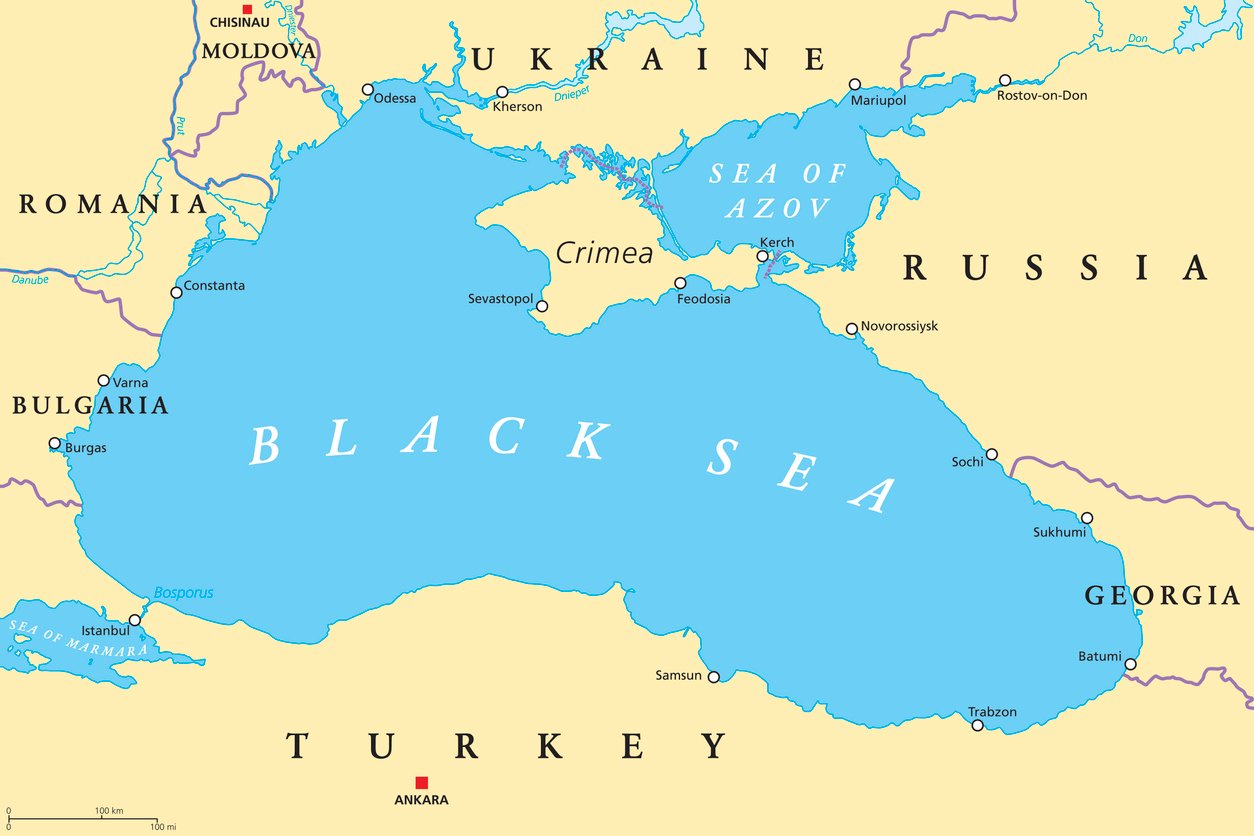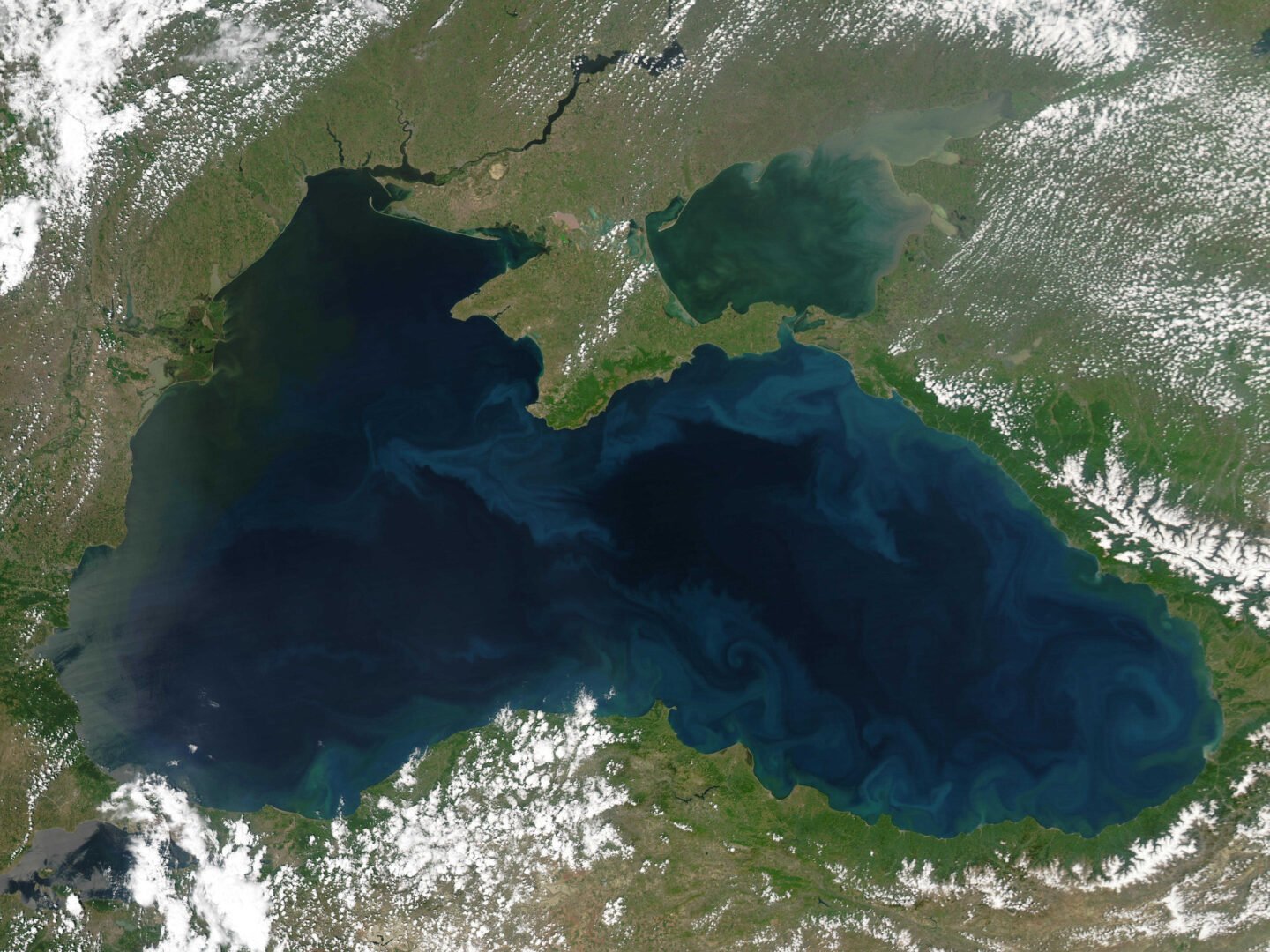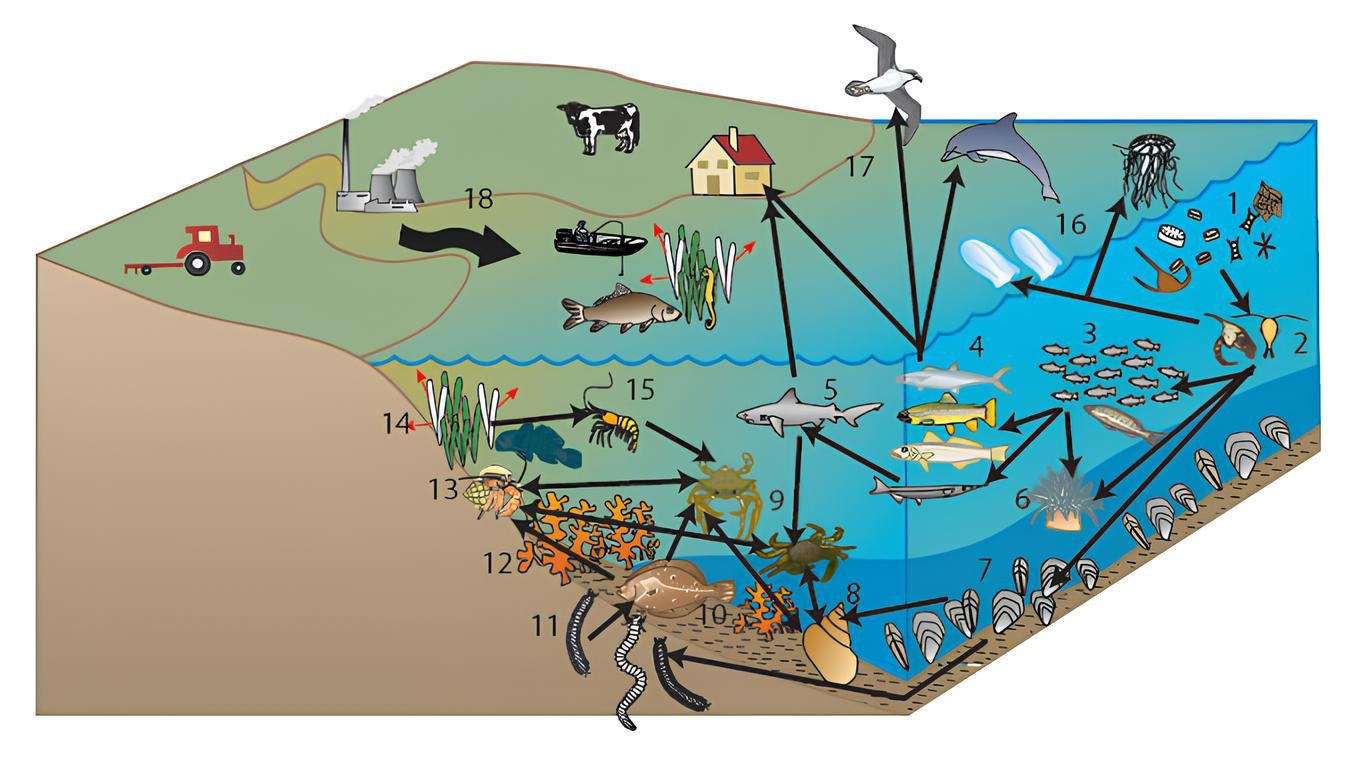The Black Sea, nestled between Europe and Asia, is a body of water steeped in mystery, history, and scientific intrigue. Spanning approximately 436,400 km² and reaching depths of 2,212 meters, it is a unique marine environment. Bordered by six countries—Turkey, Bulgaria, Romania, Ukraine, Russia, and Georgia—it serves as a geopolitical and ecological bridge between continents. However, its most striking feature is the “dead zone,” a vast, oxygen-depleted region below 150–200 meters, making it exceptionally inhospitable for divers and most marine life.

Core Insights into the Black Sea’s Deadly Depths
- No Diving Below 150 Meters: Human divers avoid descending below 150 meters primarily due to extreme oxygen depletion (anoxia) and the immense pressure, which creates an inherently lethal environment for complex life and poses overwhelming challenges for human operations.
- Origin of the Name: The name “Black Sea” likely originates from the Turkish “Kara Deniz,” possibly referencing its dark appearance or northern geographical position. Ancient Greeks initially called it the “Inhospitable Sea.”
- Legend of Preservation: Tales of “Death” in the depths are rooted in the remarkable preservation of organic matter, like shipwrecks and remains, due to the oxygen-free conditions that halt decomposition.
- Dead Zone Truth: The Black Sea’s “dead zone” is a natural, immense, oxygen-depleted region saturated with hydrogen sulfide, making deep waters uninhabitable for most multicellular organisms.
Why Divers Stop at 150 Meters
The Black Sea’s depths beyond 150 meters are a no-go zone for human divers. This isn’t primarily because they would inhale the surrounding water (divers breathe from self-contained tanks), but due to a combination of extreme environmental factors that render it exceptionally hazardous and largely inaccessible. The conditions present overwhelming dangers:
- Absolute Lack of Oxygen (Anoxia): Below approximately 150–200 meters, the water contains virtually no dissolved oxygen. This anoxic environment is lethal to nearly all complex marine life and makes it impossible for human respiration if breathing apparatus were to fail or be breached, as there is simply no life-sustaining oxygen in the surrounding water. This is the most immediate and absolute danger for human life.
- Immense Pressure: Diving to 150 meters and beyond imposes immense hydrostatic pressure on the human body and diving equipment. This pressure significantly increases the risks of issues like nitrogen narcosis (a narcotic effect of nitrogen at depth), high-pressure nervous syndrome, and severe decompression sickness (“the bends”) during ascent. Specialized equipment and highly complex gas mixtures are required just to manage the pressure, regardless of water composition.
- Toxic Hydrogen Sulfide: The anoxic deep waters are saturated with hydrogen sulfide (H2S), a highly toxic gas. While a diver in a properly sealed system (suit, rebreather, or open-circuit equipment) is not directly inhaling this gas from the water, its presence is a significant factor. It makes the environment lethal for typical marine life and contributes to an extremely inhospitable and potentially corrosive environment for equipment over time. A catastrophic failure of a breathing system in an H2S-rich environment could expose a diver to this lethal gas, adding another layer of extreme risk.
For these combined reasons, direct human diving into these depths is highly impractical, exceptionally dangerous, and ultimately lethal without the aid of specialized submersibles or remotely operated vehicles (ROVs), which are specifically designed to withstand such extreme pressures and toxic environments. The practical limits of human underwater exploration in the Black Sea were underscored on August 4th, when Rosen Zhelyazkov set a record by reaching a depth of 147 meters on scuba—despite contending with a strong underwater current during the 10-minute descent. His dive remains the deepest confirmed human descent in the Black Sea and highlights just how narrow the margin is between cutting-edge achievement and environmental impossibility in these hostile depths.
The Name’s Mysterious Roots

The Black Sea’s name carries a rich tapestry of historical and cultural interpretations. The ancient Greeks initially dubbed it the “Inhospitable Sea” (Pontus Axeinus), a reflection of its often stormy waters and the reputation of the indigenous tribes along its shores. As Greek colonization expanded and trade flourished, the sea’s character seemed to soften, leading to its renaming as the “Hospitable Sea” (Pontus Euxinus).
The modern name, “Black Sea,” is widely believed to stem from the Turkish term “Kara Deniz.” This could be due to its dark, storm-tossed appearance, which might have been perceived as “black” in ancient maritime lore. Another theory suggests it relates to ancient color symbolism, where “black” was often associated with the north. The exact origin remains debated, adding to the sea’s enduring mystique.
The Legend of Preservation in the Depths
Ancient legends speak of “Death” residing in the Black Sea’s depths, fueled by uncanny stories of remarkably preserved human remains and artifacts. This eerie folklore finds a scientific basis in the sea’s unique anoxic conditions. Below 150–200 meters, the complete lack of oxygen halts the natural process of decomposition. This allows organic matter, including ancient shipwrecks, ropes, and even human remains, to be preserved for millennia, almost as if time stood still.
This phenomenon is not due to a literal entity, but a remarkable scientific reality. The discovery of over 60 incredibly well-preserved shipwrecks from Roman, Byzantine, and Ottoman eras underscores this, transforming the Black Sea into an unparalleled underwater archaeological museum. The anoxic, toxic qualities of the deep waters explain the “legend of death” as one of incredible preservation.
Understanding the Dead Zone
The Black Sea’s “dead zone” is one of the largest naturally occurring anoxic regions globally, encompassing approximately 87% of its total volume below 150–200 meters. This zone is defined by a complete absence of free oxygen and a high concentration of hydrogen sulfide (H2S), a gas lethal to most multicellular organisms.
The existence of this dead zone is a consequence of the Black Sea’s unique hydrological structure, known as meromixis. Lighter freshwater from major rivers like the Danube and Dnieper floats atop denser, saltier water entering from the Mediterranean Sea via the narrow Bosphorus Strait. This creates a permanent stratification that prevents vertical mixing of the water column, effectively isolating the deep waters from atmospheric oxygen. Consequently, only specialized anaerobic bacteria can thrive in these conditions, while fish, marine mammals, and other complex life forms cannot survive, making it a unique and challenging environment for marine biodiversity. Unlike many coastal “dead zones” caused by human pollution (eutrophication), the Black Sea’s anoxic layer is a largely natural phenomenon, albeit one that can be exacerbated by anthropogenic pressures.
Fascinating Facts About the Black Sea
The Black Sea is a treasure trove of natural and historical wonders:
| Characteristic | Details |
| Size | Covers approximately 436,400 km², roughly four times the size of Bulgaria. |
| Depth | Has a maximum depth of 2,212 meters. |
| Tides | Exhibits negligible tides, with a maximum height change of only 18 cm over 100 years, due to its largely enclosed nature and limited connection to the open ocean. |
| Two-Layered Structure | Features an upper layer (0–150 meters) rich in oxygen and supporting abundant life, and a lower layer (below 150–200 meters) that is anoxic and toxic, characterized by the presence of hydrogen sulfide. |
| Preserved Shipwrecks | Over 60 ancient ships, dating back to Antiquity, the Middle Ages, and the Ottoman period, are remarkably preserved due to the anoxic conditions in its depths, making it an unparalleled site for underwater archaeology. |
| Historical Transformation | Geologically young, it transformed from a freshwater lake into its current marine form around 6,000–7,000 years ago due to a massive influx of Mediterranean seawater, a cataclysmic event potentially linked to global flood narratives. |
| Invasive Species | The introduction of species like the Rapa whelk and comb jellyfish in the 20th century significantly disrupted the native ecosystem, impacting local populations of mussels, sprat, and other marine life. |
| Geological Youth | In its current marine form, it is relatively young, only 6,000–7,000 years old, especially when compared to the 5-million-year-old Mediterranean Sea. |
| Bordering Countries | Its coastline is shared by Turkey, Bulgaria, Romania, Ukraine, Russia, and Georgia, making it a region of significant geopolitical importance. |
| Islands | Home to over 20 islands, with St. Anastasia (Bulgaria) being the only permanently inhabited one and Snake Island having seasonal residents, offering unique ecological niches. |
| Fishing | Its oxygen-rich upper layers support diverse fish species like turbot, sprat, and mullet, which are highly valued across Europe, despite ongoing ecological challenges and overfishing pressures in some areas. |
| Climate Influence | Creates a unique microclimate along its coast, characterized by warmer winters and cooler summers, making it an attractive region for tourism and human settlement, influencing local agriculture and biodiversity. |
Ecological and Cultural Significance
The Black Sea is more than a natural wonder; it is a vital ecological and cultural bridge between diverse civilizations. Its upper layers sustain a vibrant ecosystem and support significant fisheries, providing high-quality fish valued across Europe. While the sea demonstrates a remarkable ability to self-clean in its oxygen-rich surface layer, it faces ongoing challenges such as pollution from land-based sources (eutrophication), overfishing, and invasive species. These issues necessitate continuous international cooperation for sustainable management and protection of its unique biodiversity.

Culturally, the Black Sea has historically been a crossroads for trade, migration, and exploration, deeply influencing the civilizations along its shores. Its extraordinarily preserved shipwrecks offer an invaluable window into ancient maritime history, providing unparalleled insights into past seafaring technologies and trade routes. Its picturesque islands and unique microclimate further enhance its appeal as a destination for both tourists and scientific researchers.
Beneath the Surface: Preserving the Paradox of the Black Sea
The Black Sea presents a striking paradox: a vibrant, life-filled surface coexisting above a silent, anoxic abyss. Its “dead zone” below 150 meters, saturated with hydrogen sulfide, not only serves as a natural archive preserving relics of the past but also poses insurmountable challenges for direct human underwater exploration. The historical accounts and legends of death in its depths are not mere folklore but are profoundly rooted in the scientific reality of its extreme, oxygen-free conditions. As we continue to unravel the Black Sea’s mysteries through ongoing research and advanced exploration technologies like ROVs and submersibles, it is imperative that we commit to protecting its delicate ecosystem, ensuring that its natural wonders and historical treasures endure for generations to come.


